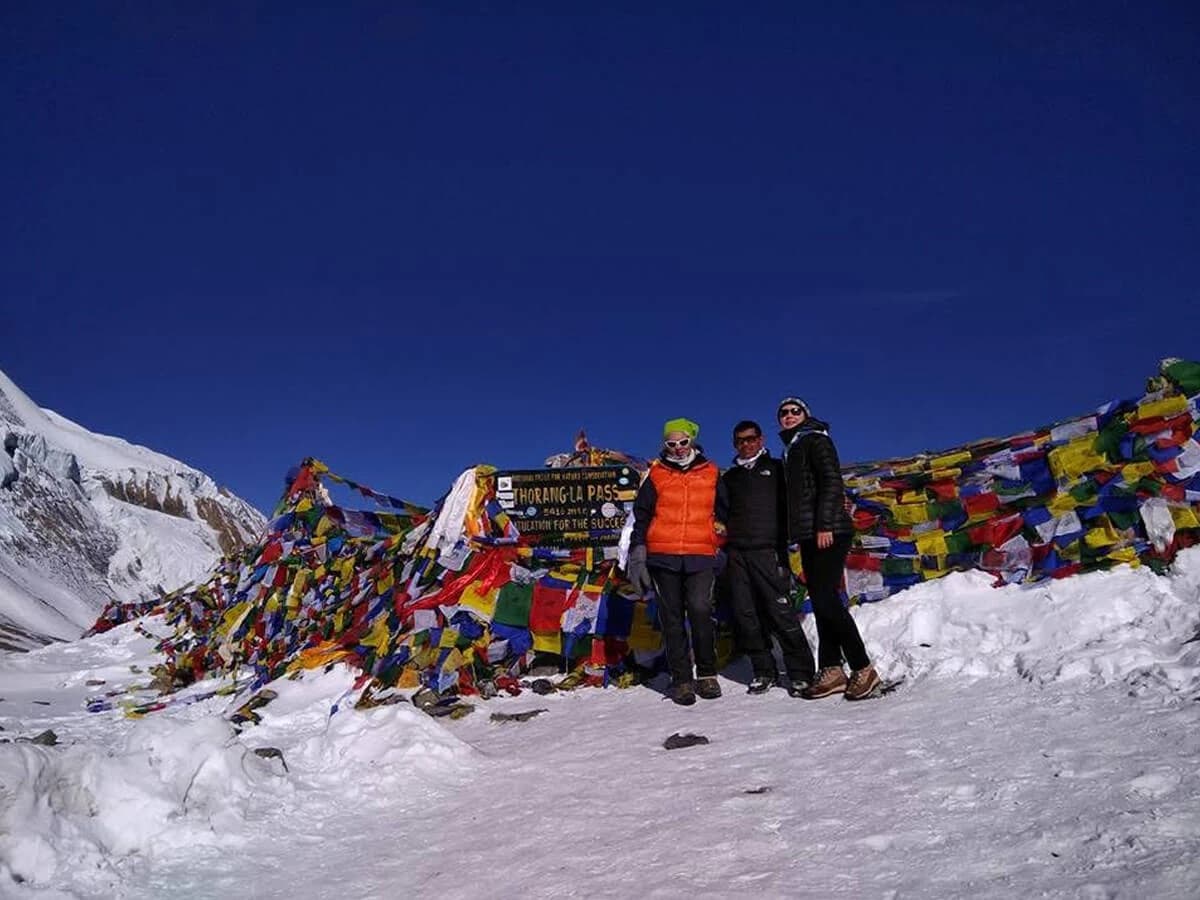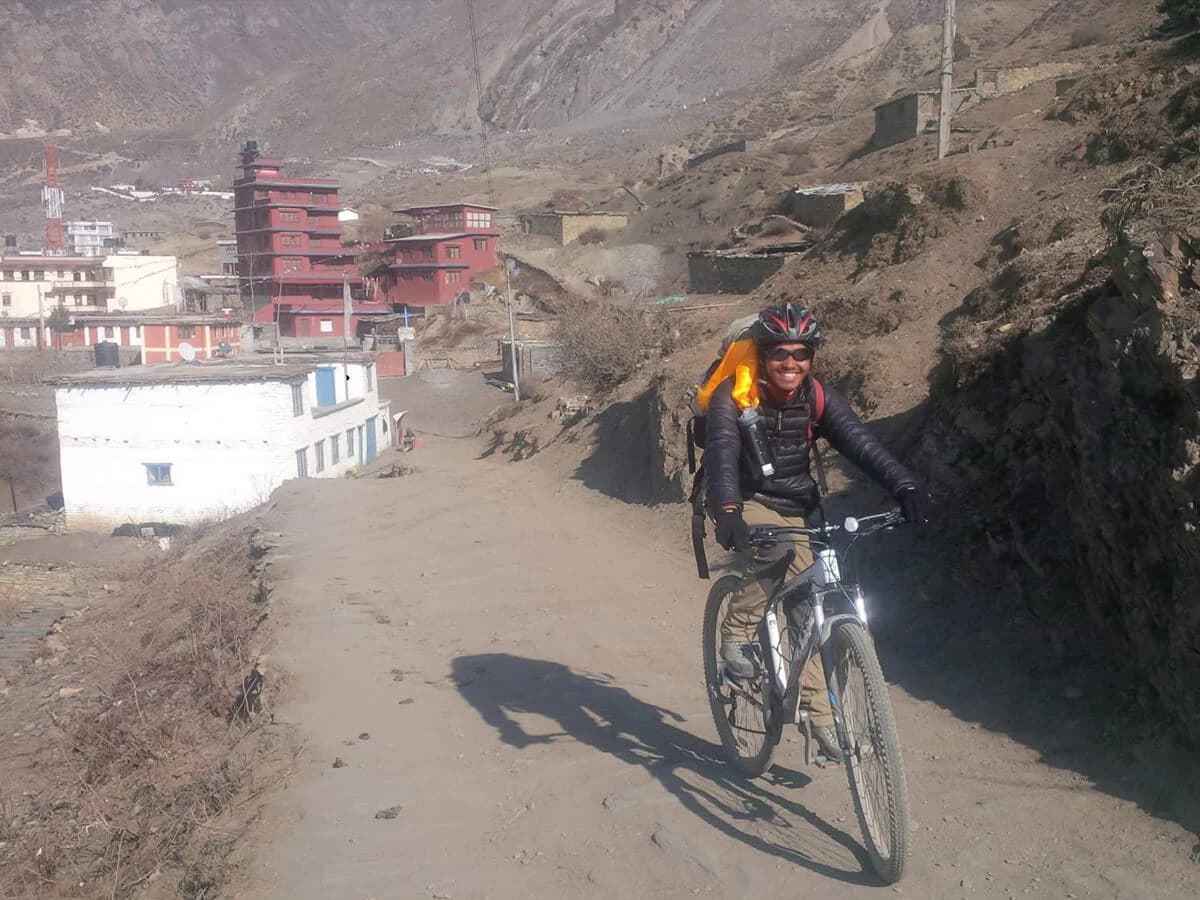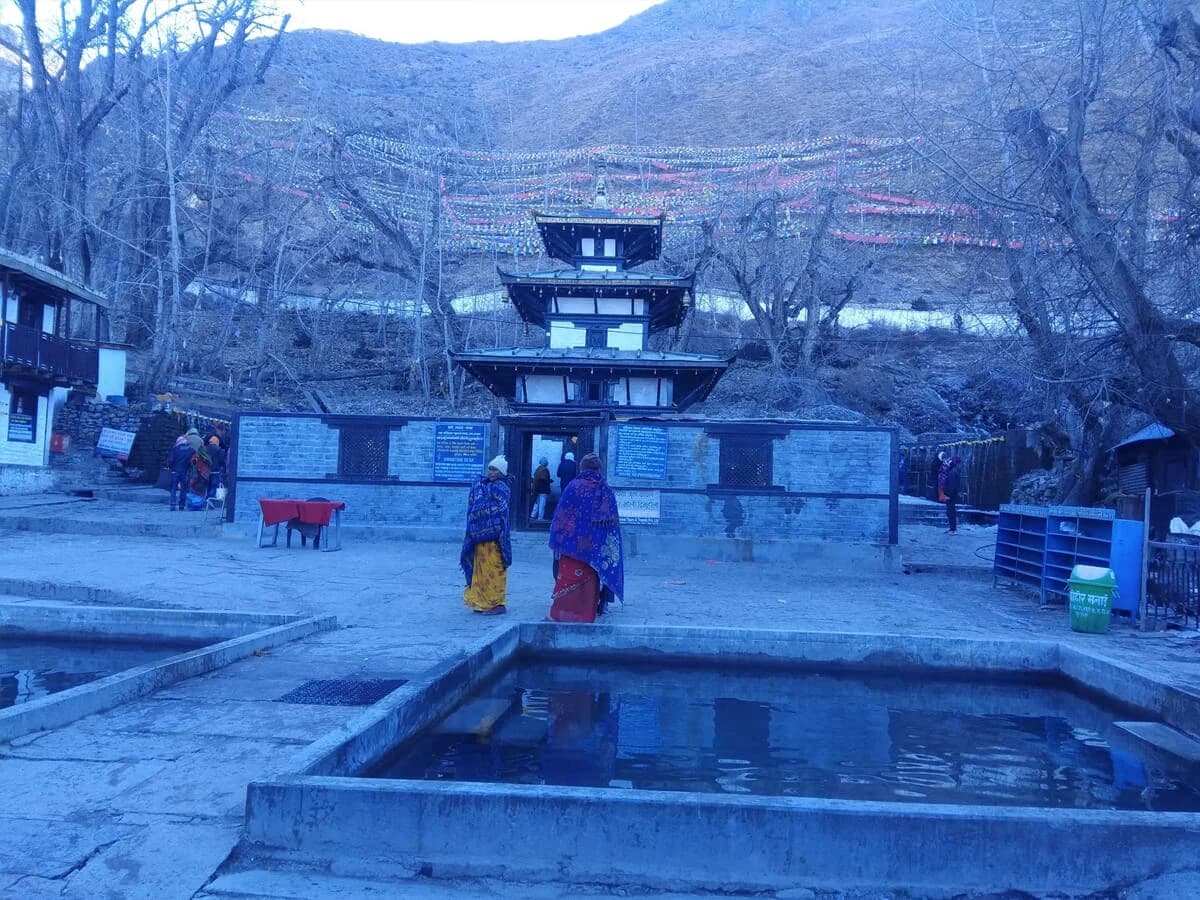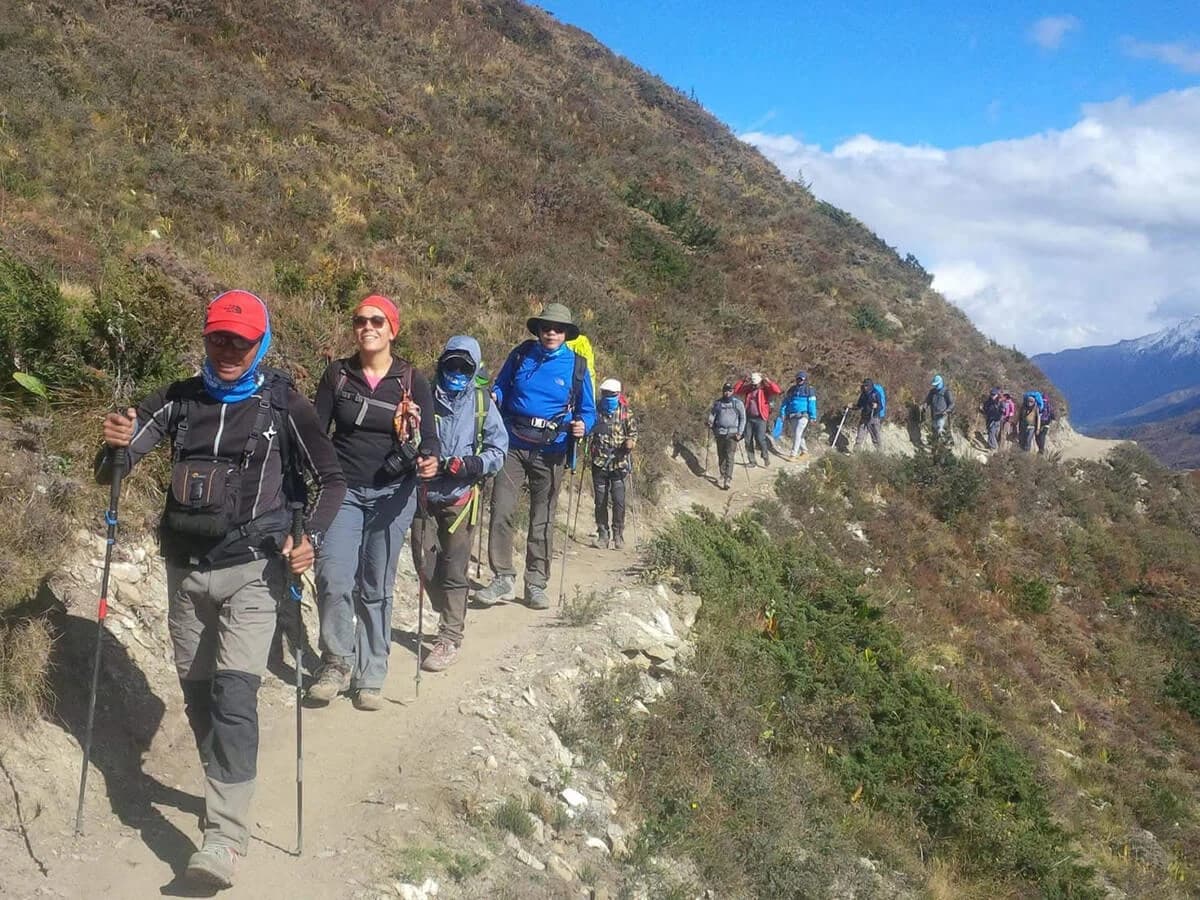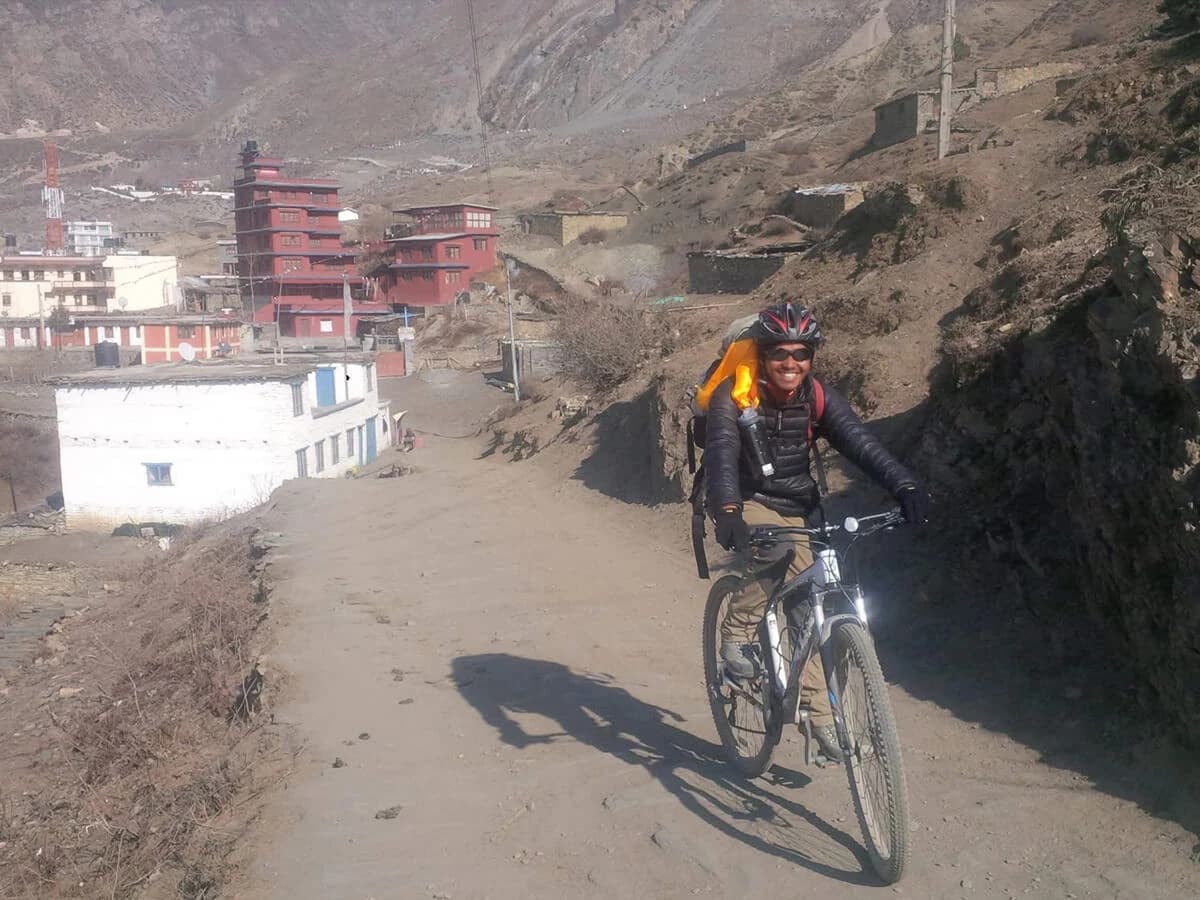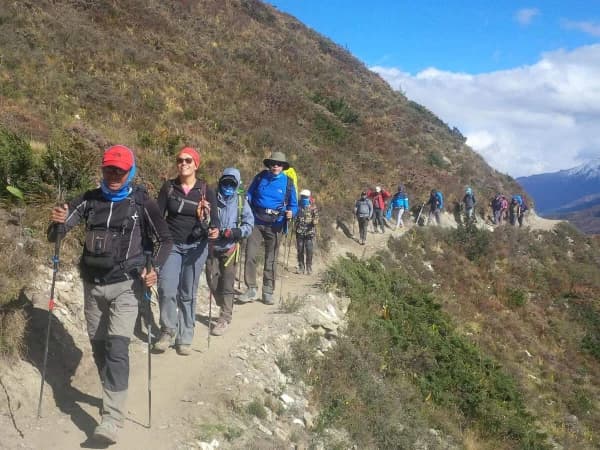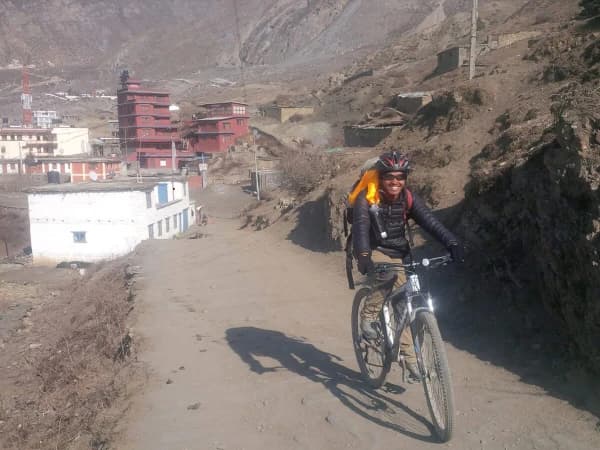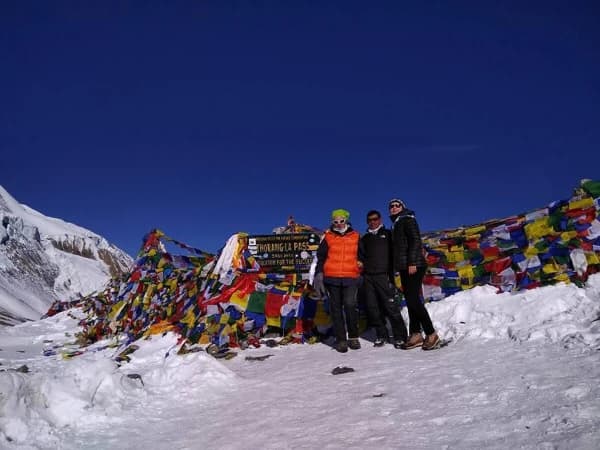Overview
Annapurna Circuit is a renowned trek in Nepal that offers breathtaking mountain views, multi-cultural experiences, and diverse landscapes. The circuit is situated In the Annapurna and Mustang region of central Nepal, home of the majestic Annapurna massif. This trek circumnavigates the Annapurna massif, taking trekkers through diverse terrains, from subtropical forests to alpine meadows and high-altitude deserts.
The Annapurna circuit is a classic trek that winds through Himalayan foothills and over high passes, it traditionally follows an anti-clockwise trail around the Annapurna massif taking through the Annapurna, Manang, and Mustang regions. The trek starts in Darapani around 6 to 12 hours’ drive from Kathmandu and concludes in the Kali Gandaki Gorge. The highest point is the Thorung La Pass at 5,416 meters above sea level. Road construction has impacted parts of the route, but alternative trails provide a more pleasant experience.
The Annapurna circuit typically takes 15 days to complete and the total distance covered ranges from 150-240 km, depending on your chosen endpoints or use of transportation. You will pass through rice-terraced fields, subtropical forests, and glacial environments. Major peaks visible from the Annapurna circuit, including the Annapurna Massif, Annapurna I (8,091 meters/26,545 feet) world’s 10th highest mountain, Annapurna II (7,937 meters/26,040 feet), Annapurna III (7,555 meters/24,786 feet), Annapurna IV (7,525 meters/24,688 feet), Dhaulagiri Mountain (8,167 meters/26,795 feet) the world's 7th highest mountain, Manaslu Himal (8,163 meters/26,781 feet) world’s 8th highest mountain, Machharpuchhare (fishtail mountain 6,993 meters/22,943 feet), Mardi Himal (5,587-meters/18,330 feet), Nilgiri Himal 7,061 meters/23,166 feet), Himchuli peak (6441 meters /21126 feet), and other peaks, although this trek offers stunning vistas of both 8,000-meter peaks and other surrounding mountains.
Highlights
- Get an amazing experience of the Thorong La Pass (5,416m/17,769ft), the trek's highest point with breathtaking sweeping views.
- Get an incredible opportunity to explore Nepal’s highest Tilicho Glacial Lake (4,919m).
- Explore beautiful Manang Valley.
- Explore Muktinath temple a sacred site for both Hindus and Buddhists.
- Trek through woods of oak, rhododendron, and rice fields, and discover the various facets of the Himalayas.
- Trek through the Kali Gandaki Gorge world’s deepest George.
- Offers panorama views of Annapurna massif including Annapurna I, II, III, IV, Dhaulagiri, Machhapuchare, Nilgiri, and Manaslu the most iconic peaks in the Himalayas.
- Get an incredible sunrise and sunset views which are absolutely magical.
- Natural hot springs in Tatopani is perfect for relaxation after days of trekking.
Why Does the Annapurna Circuit 15-Day's Trek?
Annapurna circuit is the one of famous destinations among others trekking destination in Nepal. Every year lots of tourists visit in this region. The Annapurna Circuit trek offers a unique blend of adventure, natural beauty, and cultural immersion likewise, in this trek, you will climb at an altitude of 5,416 meters Thorang La Pass one of the highest trekking passes in the world for an unparalleled sense of accomplishment.
The Annapurna Circuit trek has often been voted as the best long-distance trek in the world. On the one hand, even if it is long you will explore natural splendor, the beauteousness of the areas, and diverse landscapes from lush green valleys to arid deserts, from dense rhododendron forests to barren moonscapes, the trek showcases Nepal’s incredible geographical diversity, panoramic views of the Annapurna and Dhaulagiri massifs including iconic peaks like Annapurna I (8,091 meters/26,545 feet), Manaslu (8,163meters/26,781feet), and Dhaulagiri (8,167 meters/26,795 feet) and others peaks.
On the other side, encounter vibrant Gurung, Magar, and Thakali cultures as you pass through charming villages with ancient traditions and warm hospitality, explore sacred sites and learn about Buddhist Monasteries and Hinduism Temples, try to savor delicious Nepalese local cousins and experience the local way of life.
Trek usually takes you through the dust road by jeep to Besisahar and then trek from the lush dense pine forests, numerous rivers crossings over steel and wooden bridges, waterfall, glacial lakes, and spot diverse flora and fauna, including Himalayan birds, yaks, and blue sheep wildlife animals walk through ascending and descending valley up and down hills.
At last, we have designed this 15-day trek for all who want to travel and experience the real beauties of Nepal. Hope this 15 days' packages will fulfill your dream to exploring the famous destination of central Nepal.
Are you ready for the Annapurna Circuit Trek? How to Prepare for the Trip?
The Annapurna Circuit is undoubtedly a challenging but incredibly rewarding trek. It requires a good level of physical fitness, mental preparation, and careful planning. Covering around 150-240km likewise, the trek necessitates a substantial time commitment, from 12 to 15 days or more. On average you have to walk approximately 5 to 6 hours per day, while on Thorong La pass you have to walk 7 to 8 hours per day. Here we have mentioned some tips about your physical fitness, mental preparation, and acclimatization.
Cardiovascular Fitness: To increase your endurance, regularly perform cardiovascular exercises like jogging, cycling, swimming, and running. By doing these exercises you will improve heart and lung strength. They enable you to stroll for extended periods of time without experiencing fatigue. Make an effort to engage in aerobic activities three to five times per week. As your fitness level increases, you can progressively extend the duration and intensity of your sessions from shorter beginnings.
Additionally, this workout makes it easier for your body to consume oxygen. When trekking at higher elevations, it is crucial. It might also be beneficial to incorporate interval training into your regimen, which alternates periods of high activity with rest. This gets you ready for the peaks and valleys of a trek, such as walking on level ground and ascending hills. Regular aerobic exercise will greatly simplify and enhance your trekking experience.
Flexibility and Balance: Are you aware that other aspects of your trekking plan are just as crucial as flexibility? You feel liberated enough to overcome difficulties or take large strides with your muscles. You might start practicing stretches for your calf muscles or bowing to touch your toes. Stretching daily will help you avoid muscular fatigue and overcome the possibility of having tight muscles, especially after a long day trek.
Flexibility and balance combine to make your movements fluid and under control. Yoga and other such practices are excellent because they simultaneously enhance both. It simultaneously helps you strengthen your core and stretch profoundly. Therefore, you will accomplish the goal of trekking without being hurt while aiming for flexibility and balance.
Strength and Endurance: The trek consists of difficult terrain, rocky and uneven pathways, and steep ascents and descents. To combat these problems, it is essential to focus on building your leg muscles' strength and endurance through activities like hiking, stairs, climbing, or weightlifting. Incorporate strength training activities into your fitness regimen, emphasizing the quadriceps, hamstrings, calves, and core muscles—muscles that are required during trekking. These muscle groups can be strengthened with exercises including calf raises, step-ups, lunges, and squats. Additionally, to replicate the circumstances you would experience during the trek, include frequent treks or hill training.
Acclimatization: Acclimatization to altitude is essential for the Annapurna Circuit Trek via Thorung La pass. The trekking schedule is structured to include rest days and a gradual ascent to let your body acclimate to the higher elevations. On rest days, spend some time exploring the neighborhood, going on quick treks, or just relaxing and drinking plenty of water. Pay attention to your body and let your guide or hiking team know if you experience any altitude sickness symptoms. Proper acclimatization lowers the danger of altitude-related health problems and increases your chances of finishing the trek.
Mental Preparedness: Because of the physical strain, altitude-related ailments, and decreased oxygen levels, trekking at high elevations can be emotionally taxing. Being mentally prepared is equally as crucial as being physically fit. To overcome obstacles in your path, cultivate a positive outlook, perseverance, and mental toughness. Long walking days, erratic weather, and possible discomfort from altitude are all things to prepare for. A healthier mental state during the hike can be achieved by being aware of the challenges and setting reasonable expectations.
Annapurna Circuit Trek Packing lists
Head wears: Woolen hats (keep warm head), buff masks (protect neck from coldness), caps (cover head from sun heat), 100% UV-protected sunglasses (to protect eyes from snows), UV-protected sunglasses (keep protects eyes from bright sun)
Hand wears: Glove thin 2 to 3 pairs, glove warm pair gore-tax 1 to 2 pairs. In high altitude areas nobody can determinant what will happen due to small clothing negligence so always have to carry enough clothing for whole body and thin gloves use to keep warm hand from coldness so carry at least 2 to 3 pair’s thin gloves. Although thin glove only gives warm but do not protect wind so for protect wind, need warm gore-tax gloves 1 or 2 pairs.
Upper Body wears: Thermal layers and fleece (thermal layers and fleece means thermal full t-shirt or sleeves which are only have to use while stay night at lodge to keep body warm), quick dry T-shirt (this help to dry sweating t-shirt quickly in a certain period of time), gore-tax jacket (gore-tax jacket use to protect body from cold, windy, and rainy weather conditions), down jacket (it is use for keep warm body and also protect wind and do not use to get cold), soft shell jacket (it is use in Sunny day while walking on day time so at that time people use to soft shell jacket for not getting hot and cold).
Lower body wear: Trekking pants, thermal trousers, gore-tax pants, trekking socks, comfortable trekking boots (make sure that your trekking boots are worn in before starting your trek), slippers
Miscellaneous: Headlamp, solar panels, spare electrical cables, vitamins/electrical cables, batteries, recommend noise cancelling headphones (that you can wear in the bedrooms at night to help sleep), reusable water bottles, water purification tablets, thermos, trekking pole, raincoats, trekking bag, backpack, large and small microfiber towels, bin liners for dry clothes inside, personal first aid kit, Adapter, charger, power bank, dry fruits, nuts and chocolates etc.
Toiletries: Toilet paper, wipes, deodorant, shampoo, soap, wet tissue, toothbrush/toothpaste hand sanitizers, Sun lotion, moisturizer, sunscreen (save skin form sunburn), lip balm with UV protection, etc.
Get the Best Annapurna Circuit Trek Service with Sherpa Summits
We, Sherpa Summits, specialize in crafting unforgettable trekking experiences for both domestic and international adventures in Nepal. Our dedicated team is committed to providing exceptional support throughout your journey. From acquiring essential permits and arranging transportation to handling every logistical detail, we ensure a seamless experience tailored to your preferences.
Enjoy the epitome of quality service at an affordable price with our Annapurna Circuit Trek Packages. Whether you’re embarking on a solo adventure or exploring the Himalayas with family, friends, or a partner, your safety and satisfaction are our top priorities. Our expert guides, assistant guides, and trustworthy porters, are fluent in English and other languages, guaranteeing effective communication and cultural exchange.
Customize your Annapurna Circuit Trek to align perfectly with your desires. Select your preferred departure date, group size, and daily itinerary. We welcome trekkers of all ages, as long as you possess the necessary physical and mental fitness. Rest assured, there are no hidden costs involved and you will receive transparent pricing for your trek.
Embark on the adventure of a lifetime with Sherpa Summits. Our Annapurna Circuit Trek bookings for 2025 and 2026 are now open. Don’t hesitate to contact us for any inquiries or to start planning your dream Himalayan expedition.
